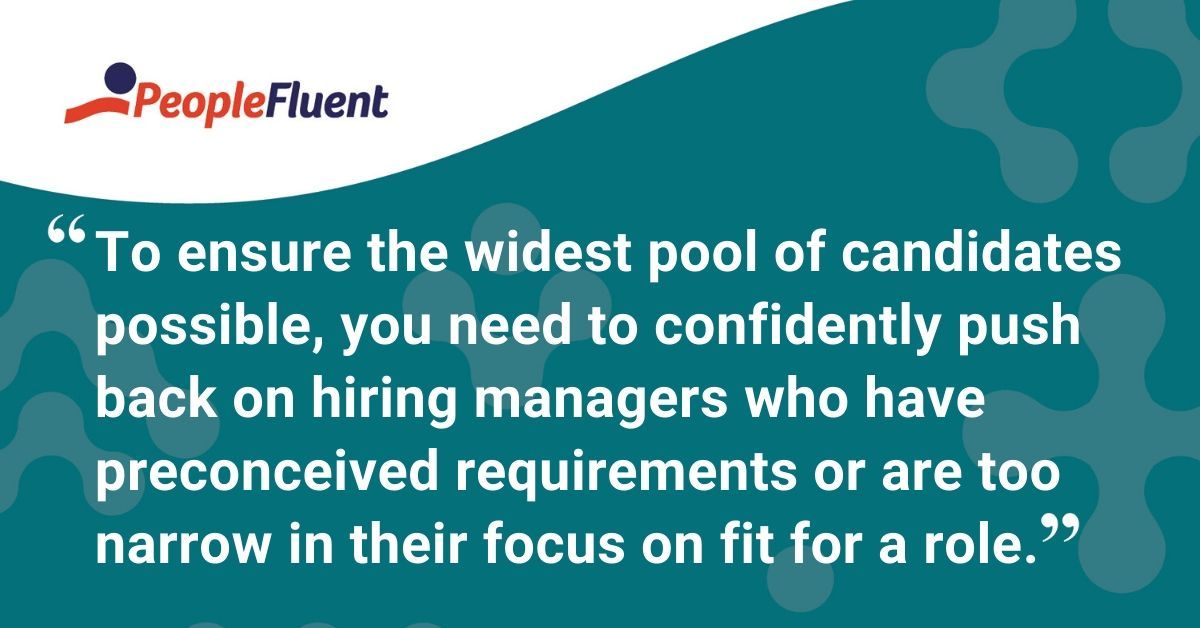Published: Apr 7, 2016Time to read: 6mins Category: Learning
4 Ways to Change Your Candidate Sourcing Strategy
Statistically speaking, the more qualifications you require in a candidate, the lower your pool of prospects will be. So, what's a recruiter to do in this situation? If you're looking for innovative ways to deliver highly qualified candidates, here are four ways to change your candidate sourcing strategy and drive recruiter success.
Standard recruiting procedure has a hiring manager listing multiple “must-have” skills or qualities that a recruiter must identify before a prospect can be considered as a potential candidate. Most are listed on the job description, and many hiring managers will supplement those with a few additional skills they really want to see in a candidate and deliver a larger list to the recruiter. Many times, the list of “must-haves” can be 10 to 15 uniquely specific skills or experiences.
Consider these four ways to change your candidate sourcing strategy and deliver results.
1. Be The Expert
In my former life as a recruiter, I was always impressed by the highest performing recruiters at my organization, the ones who finished in the top three every year for overall performance. They each had a quality that came from a combination of experience, confidence, and knowing their market cold. Each could speak with a hiring manager in candid terms and explain why the requirements they were asking for were preventing the hiring manager from speaking with some of the best candidates on the market.
They were able to boil down what the needs of the role were, while overlaying the realities of the job market. In many cases, they were pushing back against internal biases and long-held beliefs to get the organization to consider something different.
You might also like: 'How COVID-19 Has and Will Change Recruiting Strategies'
2. Think Differently
For many organizations, there are deeply held beliefs that you can only seriously consider candidates who meet a strict set of requirements. My guess is, at many organizations, no one challenges the underlying assumptions of those requirements. Innovative organizations should be able to access and use detailed analytics tied to their hiring data to determine if those assumptions have held true or, quite possibly, are holding you back.
Are you only hiring sales reps exclusively with specific industry experience or who attended certain prestigious colleges? Do they perform? Do they stay with your organization longer than 18 months? Do they get promoted?
Many organizations would be shocked to learn that many of the basic tenants of their sourcing and hiring strategy aren't delivering the results they believe true. This is where talent acquisition leaders add significant value to their organization by providing analytics to support a change in strategy. Don’t fall into the trap of assuming that “the way we have done it before” works.

Keep reading: 'How to Keep Your 2nd-Place Candidate Warm for Future Roles'
3. Consider What An Outside-Your-Target Candidate Can Offer Your Organization
The challenge many organizations face is that they're set in their ways and in their processes. That applies to all areas of the organization, not just recruiting. The challenge you face when hiring only candidates with experience in your industry and/or who come from competitors is that you only hear solutions based on what has been done in your industry before.
How many meetings have you been in where a new employee speaks up and starts their point with, “At XYZ Company, we used to do it this way…” While that may be a new way of looking at a solution for your organization, it's not looking at it from a fresh set of eyes.
You want to differentiate or innovate, and copying someone else’s strategy is not innovation. What if that new employee brought a fresh set of eyes to the project and suggested ways of approaching your market that were new to the organization and maybe even your industry? The theory supporting this is the same one used to support creating diversity in your organization.
Research clearly shows that a more diverse working team will produce greater innovation and ROI than a homogeneous team. Translated, this means that bringing outside/unique perspectives to your organization can help create a more diverse group of beliefs working on your teams. This diversity of perspectives should help you achieve more creative results.
Related reading: '4 Practical Ways to Recruit Diverse Talent'
4. Understand What the Current Market is Dictating
Let’s also consider the realities of today’s job market. As jobs continue to be added to the economy and wages begin to tick up, the power in the job market has shifted to the candidate. Every strong candidate now has a significant number of suitors for their time and attention. Maybe you should try expanding your pool to include strong candidates in other industry verticals.
We're not suggesting these candidates won’t be equally as in-demand. However, they may be open to looking beyond what they know to broaden their experience into another industry. For many candidates, a horizontal move to another industry can be appealing. Make sure you understand the skills that are transferable and, most importantly, make sure you are looking at A-Players.

More from the blog: '5 Candidate Sourcing Strategies to Build Your Talent Pipeline'
A Checklist of Sourcing Strategies
So how can you, as a recruiter, change the way your organization approaches its sourcing and hiring strategy? Here’s a checklist to help you frame your argument:
- Start with one role, one hiring manager, or one job function first (Rome wasn’t built in a day).
- Analyze the most relevant 2-3 requirements of that position/job function, but try to avoid anything specific to industry.
- Do some research on potential candidates who have the required skills but may fall outside the “usual” sourcing pools.
- Contact a handful of those candidates and see if you can locate an A-Player that is open to considering your role.
- Speak to the hiring manager and let him/her know that you may have found a potential pool of strong candidates for them to consider. Be ready to support your position with facts from your discussions with the candidates you sourced.
- Get the prospect in contact with the hiring manager ASAP. Many times an engaging phone conversation with a candidate can turn a hiring manager into an advocate for thinking outside the box.
Sourcing strategy is essential to recruiter success. Make sure you're giving yourself the widest pool of candidates possible to work with on every requisition. In order to do so, you need to confidently push back on hiring managers who have preconceived requirements or are too narrow in their focus on fit for a role.
You are the expert in finding candidates, understanding their strengths and weaknesses, and determining how they can fit into the organization. Remember, different is good, different brings change, and different can deliver ROI.
Recommended reading to download today: '5 Recruiting Metrics that Drive Business Value'
Discover How Recruitment Lets You Find the Right People—Fast
PeopleFluent helps you fill critical roles with the right people and the right skillsets on a global scale. At the same time, it helps you build your employer brand and sharpen your competitive edge.